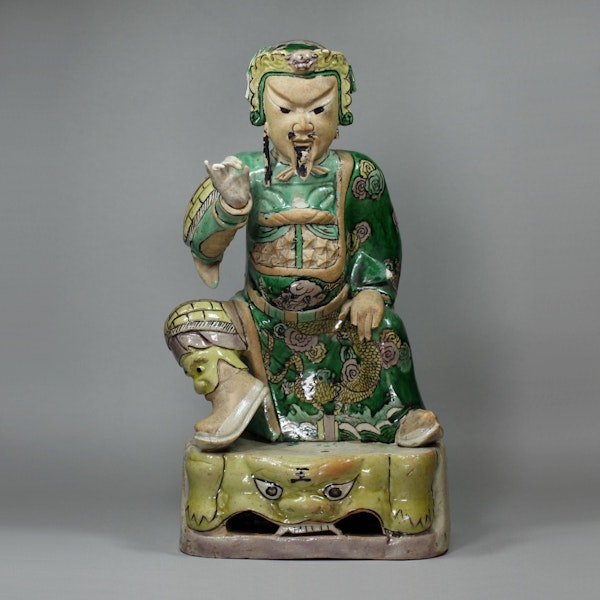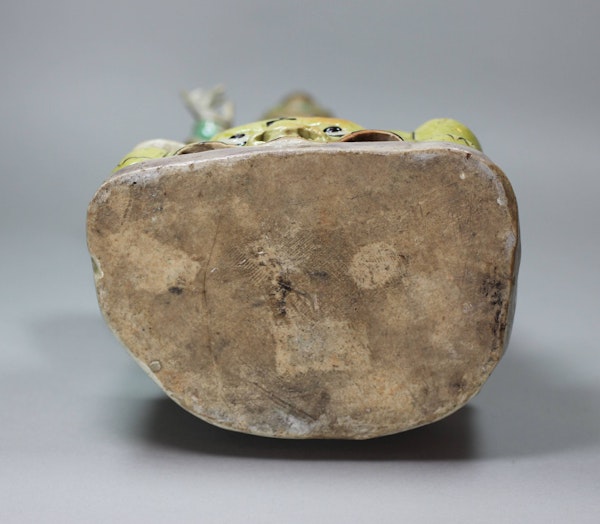Chinese famille verte biscuit figure of Guandi, the God of War, Kangxi (1662-1722)
Chinese famille verte biscuit figure of Guandi, the God of War, Kangxi (1662-1722)
POA
Description
Chinese famille verte biscuit figure of Guandi, the God of War, Kangxi (1662-1722), seated upon a stool in the form of a tatoie mask, his right leg and arm outstretched; wearing elaborate armour with further tatoie mask detail and a green cloak embroidered with dragons chasing the flaming peal, swirling clouds and waves draped over his left shoulder
Dimensions:
Height: 26.5cm. (10 7/16in.)
Condition:
Damage to back of head, chips to finger of left hand and small loss of end of beard and hair
Notes:
Guandi is the deification of Guan Yu, who was a general during the Eastern Han dynasty (25-220CE) famed for his military prowess and moral qualities. Tales of his deeds and conduct were popular after his death, most notably the 'Romance of the Three Kingdoms', a 14th- century historical novel revered as one of the greatest works of classical Chinese literature. Guan Yu was deified during the Sui period (581-618), around three centuries after his death. He has been worshipped ever since, as a bodhisattva in the Buddhist faith, as 'Emperor Guan' (關帝; Guandi) in Chinese folk religions and as 'Holy Emperor Lord Guan' (關聖帝君; Guan Sheng Di Jun) in Daoist belief. Dedicated shrines to the God of War were prayed to in hope of military success but Guandi also came to represent protection against threats (both spiritual and earthly) and longevity. Such small household shrines were extremely popular in the Qing dynasty, and often incorporated porcelain figures of Guandi. It is highly likely that this figure was used in such a setting, and the hole to the back of the figure not only reduced the risk of breakage during firing but also could be used to hold incense during prayer.
| item details | |
|---|---|
| Material and Technique | Ceramic decorated on the biscuit with overglaze enamels |
| Origin | Chinese |
| Period | 18th Century |
| Condition | Good |
| Dimensions | Height: 26.5cm. (10 7/16in.) |
Product REF: V743






